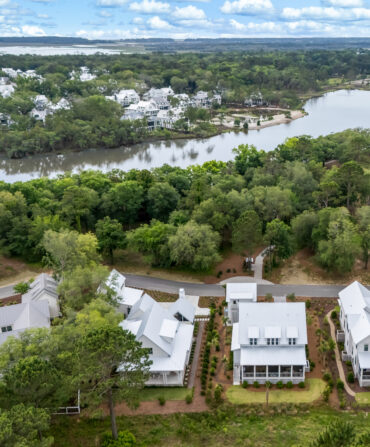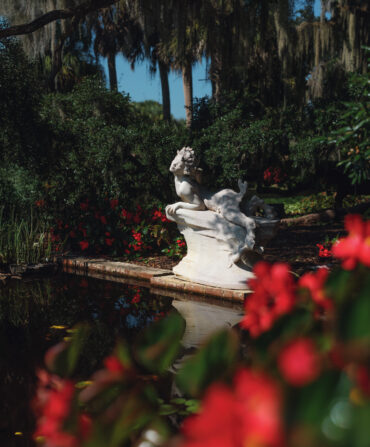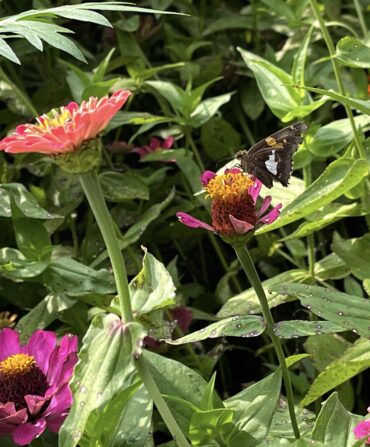The ideal way to stroll through the Lynchburg, Virginia, garden of the late poet Anne Spencer is alongside her granddaughter Shaun Spencer-Hester. In her company, it’s even easier to connect with the floral paradise that once charmed such visiting African American luminaries as Langston Hughes, Zora Neale Hurston, and Martin Luther King, Jr.
“Sometimes I hear visitors say they feel a certain energy here that cannot be verbally expressed,” says Spencer-Hester, who remembers catching lightning bugs in the garden as a child.
She moved back to Lynchburg from Washington, D.C., in 2009 to be closer to family and her grandparents’ multifaceted legacy. The shingled two-story Queen Anne that Edward Spencer, Anne’s husband, built in 1903 functioned as the birthplace of the local NAACP chapter. Still, it’s the backyard that may have offered even greater inspiration. In that narrow, deep rectangle, Anne fashioned an Eden that belied the turbulence of her time. Barely literate at age eleven, she went on to graduate as valedictorian from Virginia Theological Seminary and College (now Virginia University of Lynchburg), and as a young bride nurtured twin passions for writing and gardening, transforming her weedy lot on Pierce Street into a showplace.
The Spencers created a succession of formal and informal spaces that shifts focus from swaths of foxglove, lilac, and peonies to manicured boxwood hedges to many-hued roses—Aloha, Spanish Beauty, Climbing Crimson Glory. Twenty elaborately turned posts support a massive, wisteria-entwined pergola painted a striking robin’s-egg blue, and a matching arbor of grapevines. Gravel paths converge on a circular pond shaded by a robust, white-flowered deutzia shrub and accented with “Prince Ebo,” a fountain in the likeness of an African royal’s head, a long-ago gift from the renowned activist W. E. B. Du Bois.
“We’ve had relatives say that my grandmother even hybridized her own variety of black poppy, but we haven’t found it,” Spencer-Hester says.
Photo: Roger Foley
Anne Spencer’s restored writing studio
1 of 3
Photo: Roger Foley
A shady spot
2 of 3
Photo: Roger Foley
Shaun Spencer-Hester
3 of 3
Edward built Anne an Arts and Crafts–influenced cottage in the garden’s midst, bordered by distinctive Virginia greenstone. From the desk inside, she watched her blooms and followed her muse, often scribbling verse on seed catalogues. Anne’s poetry, considered part of the Harlem Renaissance arts movement of the 1920s, is permeated with imagery from the natural world and the Bible, reflected in titles such as “Lines to a Nasturtium” and “God Never Planted a Garden.” The words she wrote in this lovely spot eventually made her the second African American included in The Norton Anthology of Modern Poetry.
But Anne Spencer was no shrinking violet. Indeed, she earned a reputation for refusing to surrender her seat on segregated Lynchburg trolley cars. “She was feisty,” Spencer-Hester says. “So her garden was a good refuge. This is where she came to think. It was her place to get away from the goings-on on Pierce Street, and beyond.”
Even when Spencer was in her nineties and could no longer tend the garden, it was no less a preoccupation. “She’d sit on her sunporch and look out here,” Spencer-Hester says. “It was getting overgrown, but she still saw it as beautiful and perfect.” Consider these lines, penned shortly before her death in 1975:
Turn an earth clod
Peel a shaley rock
In fondness molest a curly worm
Whose familiar is everywhere
Kneel
And the curly worm sentient now
Will light the word that tells the poet what a poem is
Absent its mistress, the garden fell into weed-choked neglect. Then, in the early eighties, Spencer-Hester’s father, Chauncey (himself notable for being a civilian member of the Tuskegee Airmen), approached the local landscape designer Jane Baber White about a restoration. White in turn recruited her garden club, knowing full well the cultural significance of adopting such a project in Lynchburg.
“This was a world divided,” White says. “No member of the Hillside Garden Club had ever been here, or probably even heard of Anne Spencer. That was huge from a social and racial perspective.”
Of course, the color that counts most in a garden is the green of one’s thumb, and the Hillside ladies got theirs plenty busy, using 1937 photographs as their blueprint, right down to the trio of double-decker martin boxes atop twenty-foot poles. They cut back decades-old roses, still healthy at the root, so new growth could flourish. They unearthed and nursed original bulbs at their own homes until the soil was prepped for their return; many of them still bloom today. The project took two years, and the club has maintained the space for the public ever since, preserving a unique spot to learn about Spencer’s cultural and horticultural legacies, or to just linger and read a favorite poem.
“I think the only thing that’s missing is that black poppy that Anne grew,” White says. “We had real hopes of finding that poppy.”
“We still do,” Spencer-Hester counters. “You never know—we might walk back here tomorrow and find it waiting for us.”











